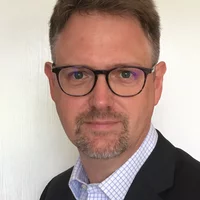Unravelling the coexistence of insulating and metallic-like excitations in SrIrO₃
A team led by researchers from the Paul Scherrer Institute PSI used resonant inelastic X-ray scattering to probe spin and charge fluctuations in atomically engineered SrIrO₃. The results revealed that insulator-like and metallic-like modes can simultaneously emerge in a correlated 5d semimetal, advancing the understanding of “strange metal” behaviour in spin–orbit coupled systems.
In quantum materials the collective behavior of electrons gives rise to phenomena beyond the reach of conventional theories. In 3d transition-metal oxides, strong electron-electron correlations can drive insulating or superconducting ground states. For 5d oxides such as iridates, these correlations are expected to be weaker due to more extended orbitals. However, strong spin–orbit coupling (SOC) significantly alters the electronic landscape, intertwining spin, orbital, and charge degrees of freedom.
Among 5d oxides, the Ruddlesden–Popper iridates (e.g., Sr2IrO4 and Sr3Ir2O7) are correlated insulators with antiferromagnetic order. The series’ end member, SrIrO3, behaves differently: it is a semimetal with no long-range magnetic order and has long been considered weakly correlated. Despite its metallicity, SrIrO3 exhibits unusual electronic properties, including enhanced quasiparticle mass and non-Fermi-liquid behavior. Electron scattering is so intense that approaches the Planckian limit — the theoretical maximum rate at which electrons can dissipate energy. These features mark SrIrO3 as part of a broader class of “strange metals.” ‘
Studying SrIrO3 is challenging because its bulk perovskite form is difficult to grow as single crystals. An alternative approach is to grow the material in the form of a thin film or a heterostructure. In this case, when confined to fewer than three unit cells in thickness, it undergoes a transition to an insulating antiferromagnetic state (Figure 1b).
Fig. 1: RIXS investigation of iridate/titanate heterostructures. (a) Representation of (SrIrO3)m(SrTiO3)1 superlattices grown on a (001)-oriented SrTiO3 single-crystal substrate. (b) Phase diagram of the (SrIrO3)m(SrTiO3)1 system, showing the bandwidth-controlled metal-insulator transition that occurs as the confinement increases from m = 3 to m = 2. (c) Intensity map of Ir L3-edge RIXS spectra for the m = 4 sample at T = 20 K, plotted as a function of energy transfer and momentum transfer Q. Two distinct excitations are observed: a low-energy paramagnon and an SOE at intermediate energies.
This study, led by Eugenio Paris at PSI, was developed in the “Spectroscopy of Quantum Materials” Group at the Center for Photon Science together with Milan Radovic and Thorsten Schmitt. The project was carried out together with Bruce Normand at the Center for Scientific Computing and other scientists of the Center for Neutron and Muons Science and from EPFL. Resonant inelastic X-ray scattering (RIXS) measurements were performed at the European Synchrotron Radiation Facility (ESRF) in Grenoble, France. The incident X-rays were tuned to the Ir L3-edge, and the energy lost upon scattering was measured. This energy loss directly reflects the spectrum of elementary excitations, making the technique particularly powerful in materials lacking long-range order.
Across all heterostructures, two robust collective excitations were observed (Figure 1c): a low-energy paramagnon and a higher-energy spin-orbit exciton (SOE). The paramagnon corresponds to propagating magnetic waves of pseudospins (hybrid spin-orbital moments), while the SOE corresponds to the propagation of a hole across SOC-split energy levels. Both modes are heavily damped, with linewidths comparable to their energies. The paramagnon is reminiscent of an antiferromagnetic insulator (Figure 2a), while the SOE shows an upward dispersion away from the zone centre and a single-site periodicity (Figure 2b), fingerprint of a non-magnetic metal. Interestingly, these seemingly contradictory excitations coexist in the same semimetallic system.
The paramagnon dispersion is compatible with a nearest-neighbor magnetic model, with ultrashort-range correlations producing a finite-size gap and broadening of the linewidths. This critical damping arises from metallic charge fluctuations in the non-Fermi-liquid phase, which also govern the upward dispersion of the SOE. The SOE in SrIrO3 differs substantially from an antiferromagnetic insulator such as Sr2IrO4, where the dispersion is governed by the underlying magnetic order.
These findings illuminate the interplay between strong pseudospin and charge fluctuations in high-SOC materials and have implications for correlated “strange” metals. Understanding such interactions could also inform the design of spintronics devices in which both charge and spin are manipulated.
Fig. 2: Dispersion of paramagnon and SOE modes. (a) Momentum dependence of the paramagnon energy ωm(Q), for all four (SrIrO3)m(SrTiO3)l samples. The dashed purple line represents the dispersion of a square-lattice Heisenberg antiferromagnet with J = 100 meV, while the solid black line indicates the finite-size gap arising from ultrashort-range magnetic correlations. (b) Momentum dependence of the SOE energy, ωo(Q), for all four samples. The purple line shows the SOE dispersion in Sr2IrO4 [from Kim et al., Phys. Rev. Lett. 108, 177003 (2012).
Contact
Über das PSI
Das Paul Scherrer Institut PSI entwickelt, baut und betreibt grosse und komplexe Forschungsanlagen und stellt sie der nationalen und internationalen Forschungsgemeinde zur Verfügung. Eigene Forschungsschwerpunkte sind Zukunftstechnologien, Energie und Klima, Health Innovation und Grundlagen der Natur. Die Ausbildung von jungen Menschen ist ein zentrales Anliegen des PSI. Deshalb sind etwa ein Viertel unserer Mitarbeitenden Postdoktorierende, Doktorierende oder Lernende. Insgesamt beschäftigt das PSI 2300 Mitarbeitende, das damit das grösste Forschungsinstitut der Schweiz ist. Das Jahresbudget beträgt rund CHF 450 Mio. Das PSI ist Teil des ETH-Bereichs, dem auch die ETH Zürich und die ETH Lausanne angehören sowie die Forschungsinstitute Eawag, Empa und WSL. (Stand 06/2025)


